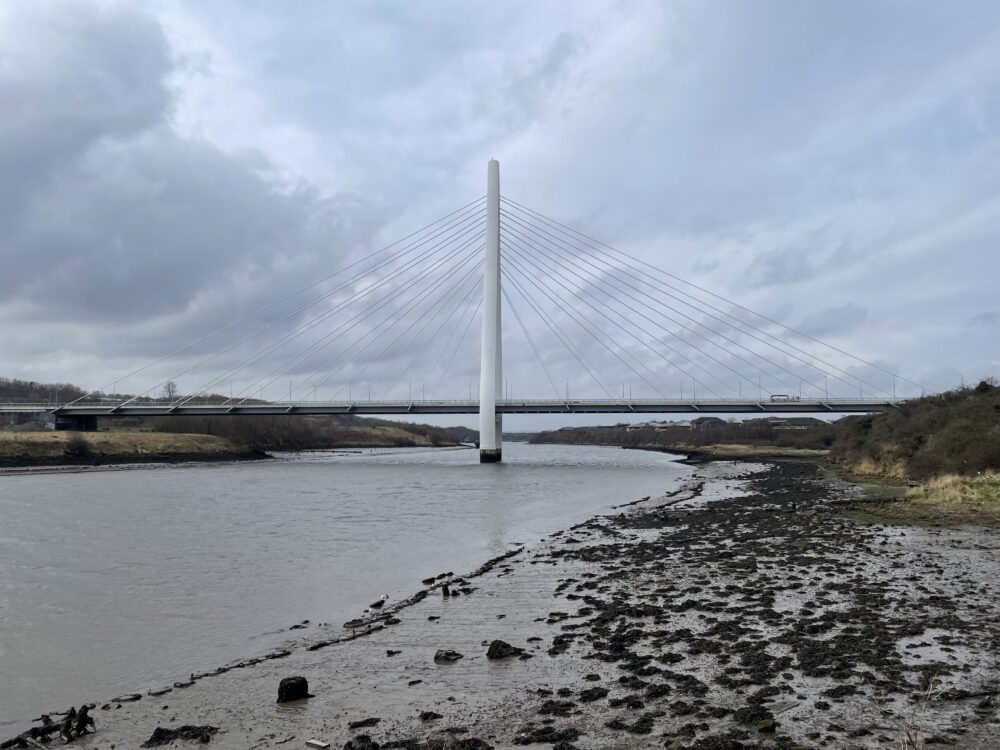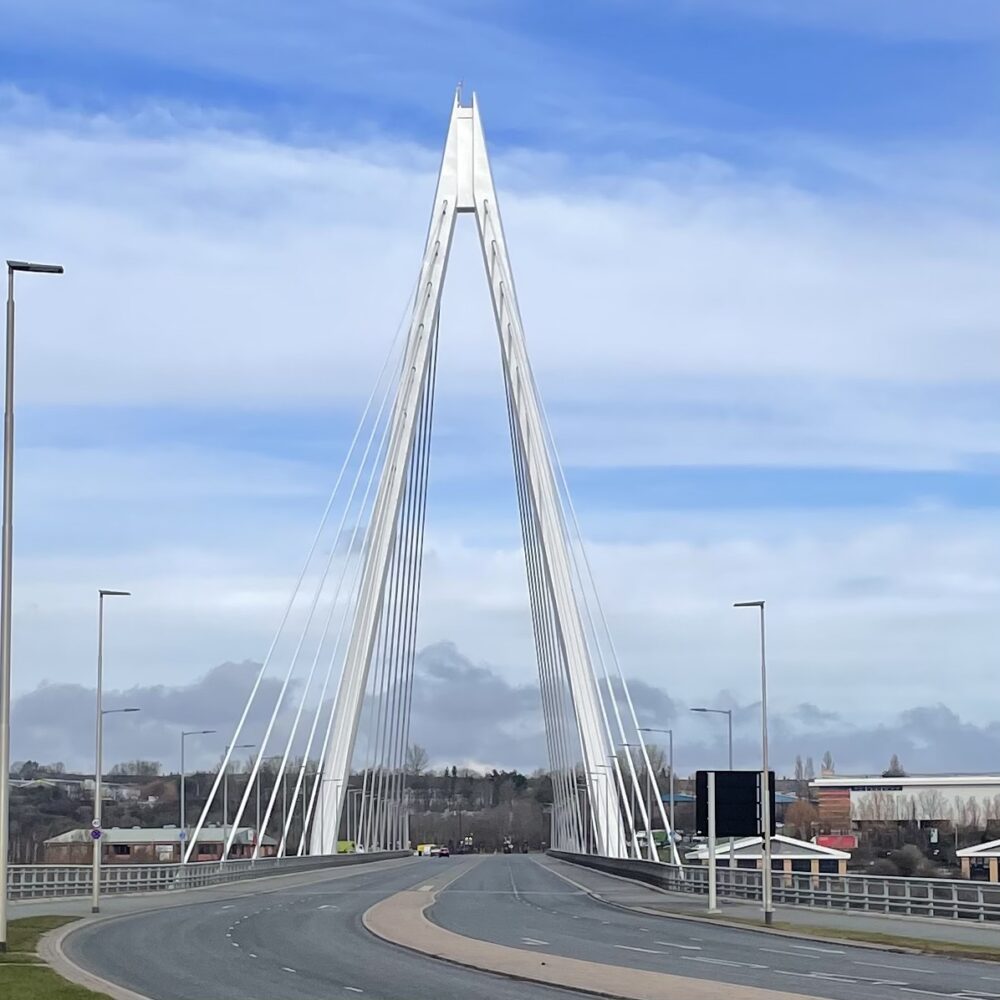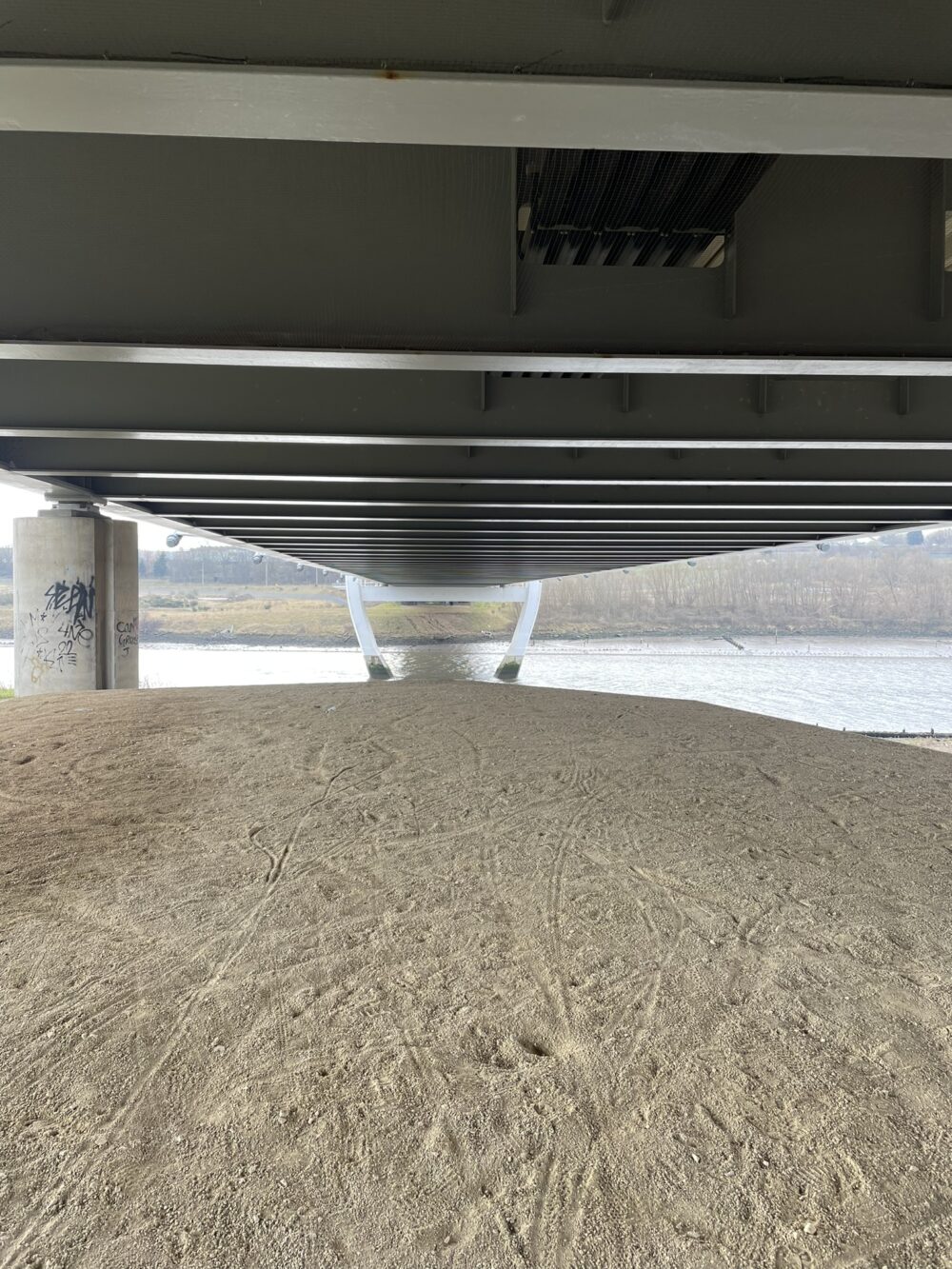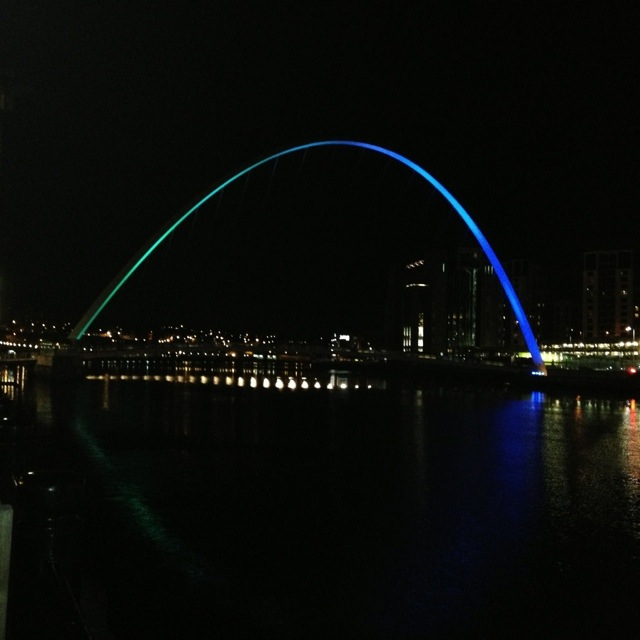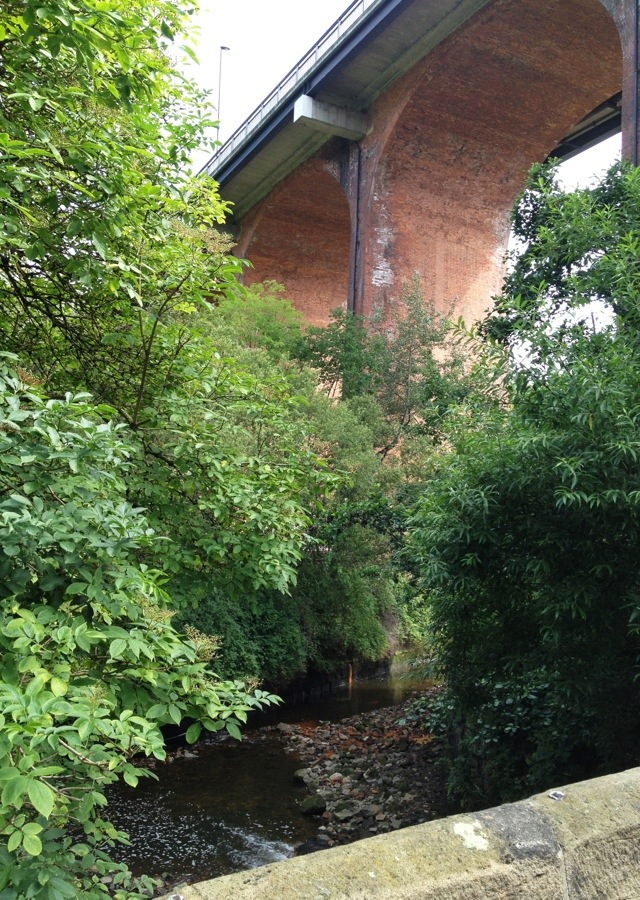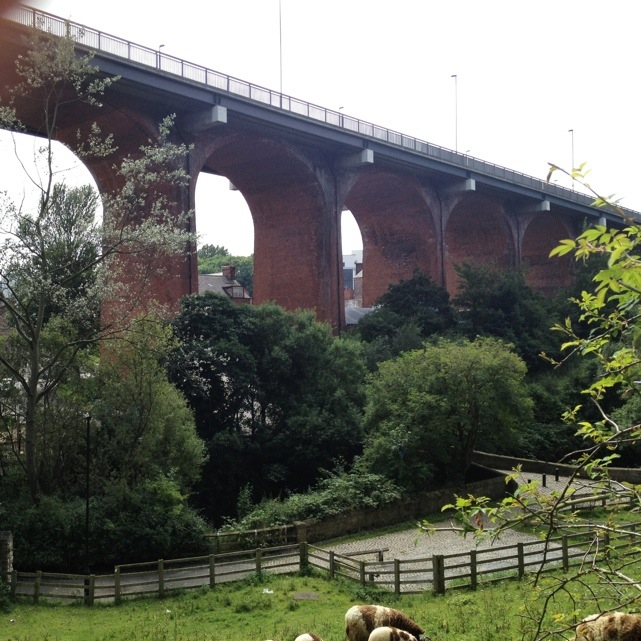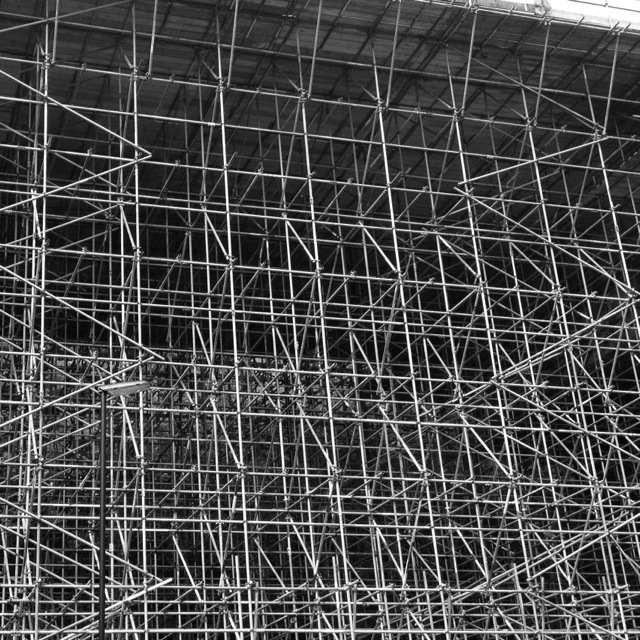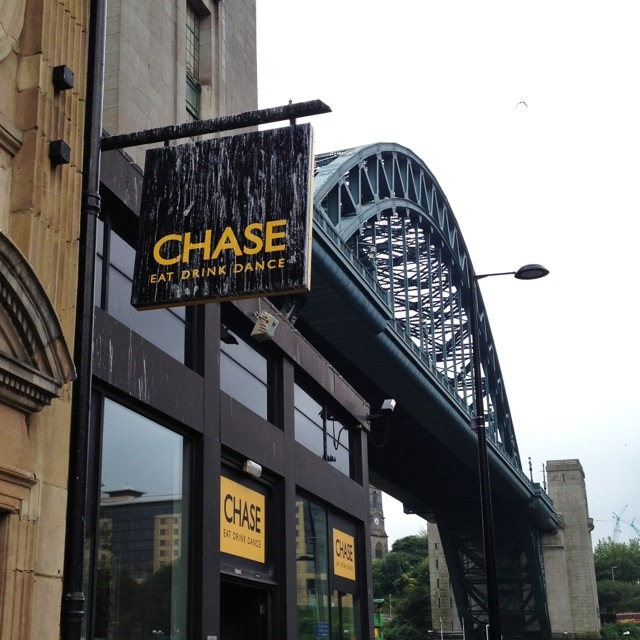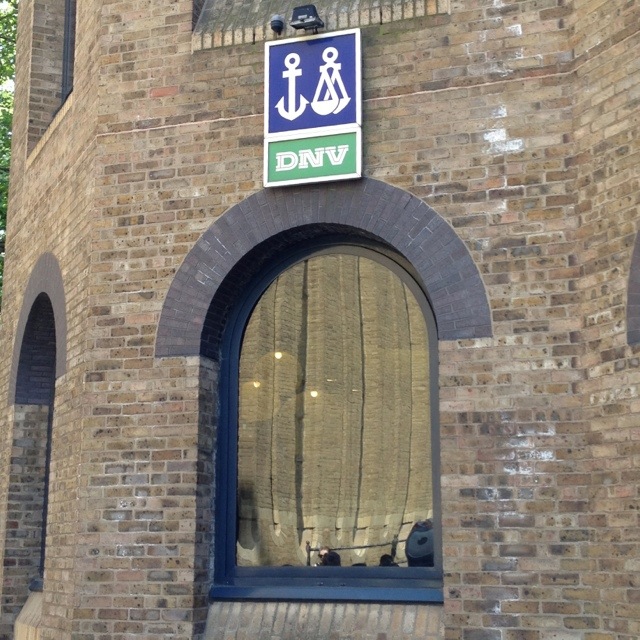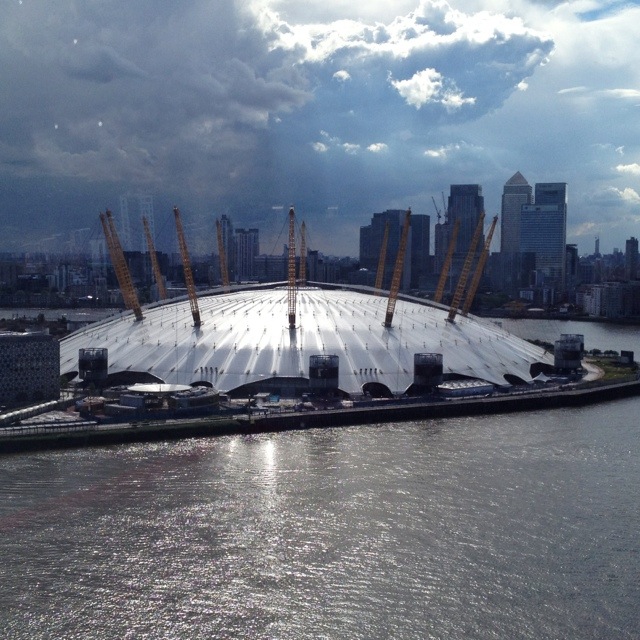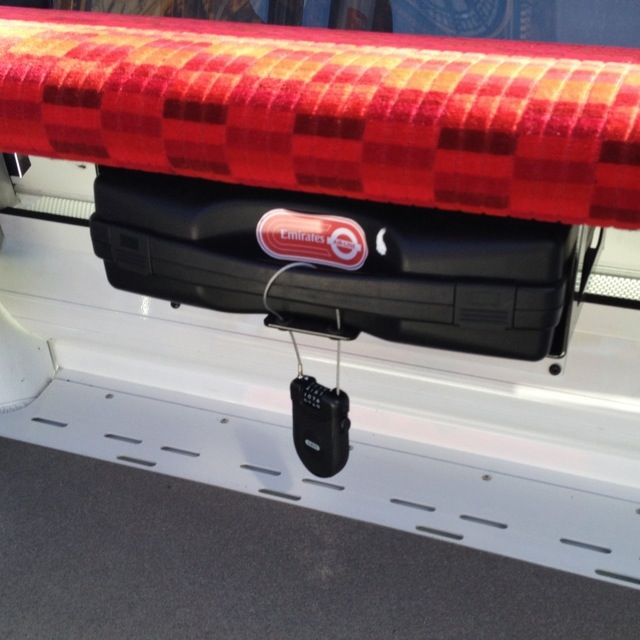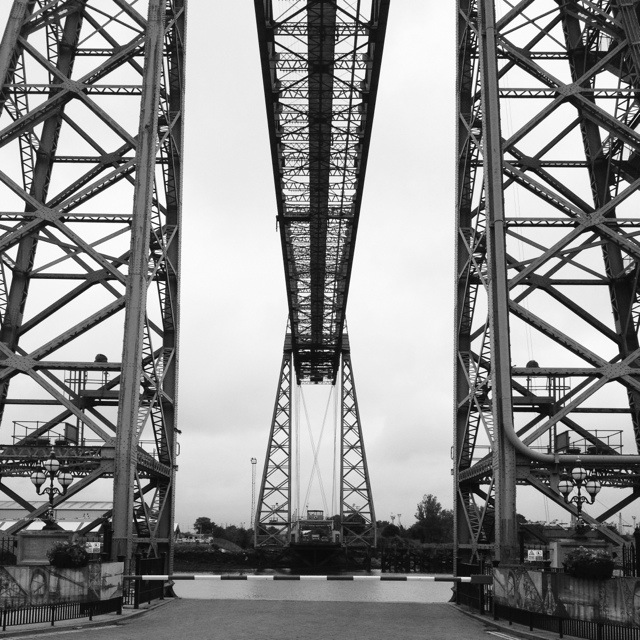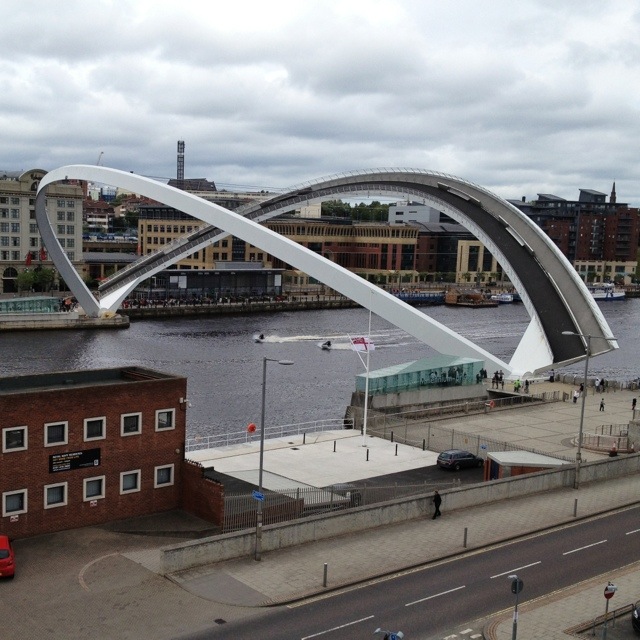234 words posted by Simon on 23 August 2012
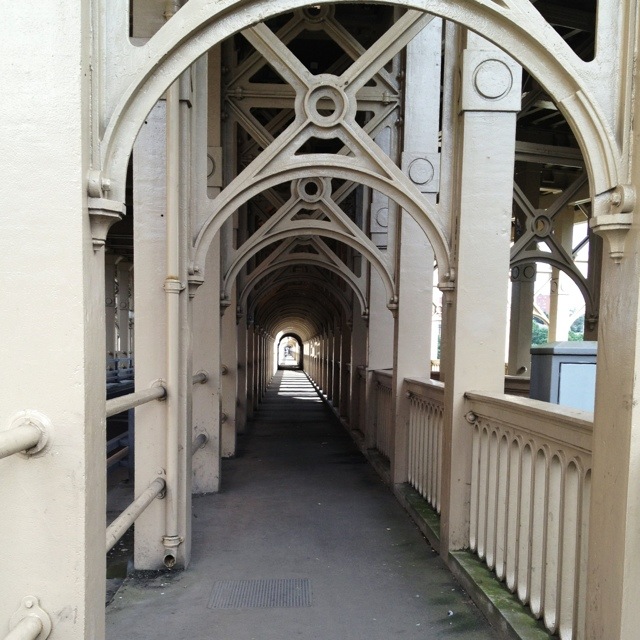
This is one of the footpaths on the High Level Bridge linking Newcastle and Gateshead. The top deck of the High Level Bridge carries trains, whilst pedestrians and road traffic cross on the lower deck. It was opened by Queen Victoria herself, and if you’re wondering about the dates and designers, this plaque might help:
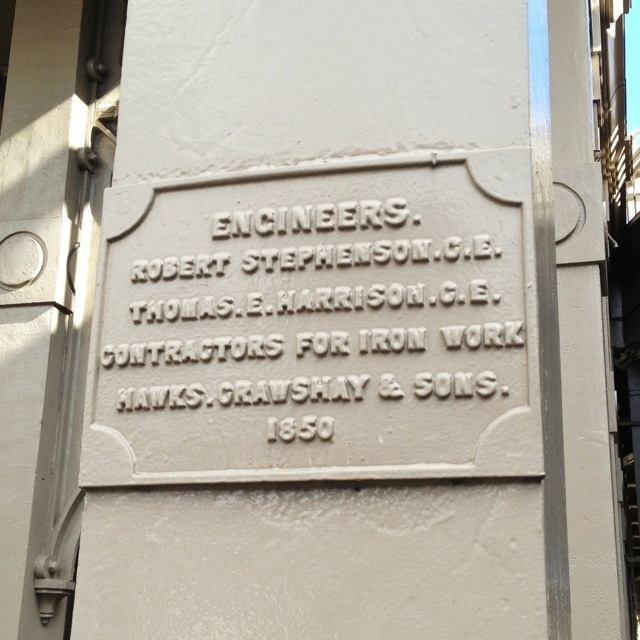
The bridge was the world’s first major wrought iron tied-arch design, and spans 1,337 feet across six spans. During the Great Fire of Newcastle and Gateshead in 1854, it’s said that the bridge “vibrated like a thin wire”.
One has to wonder whether these not-so-good vibrations caused the first flaws in the ironwork that developed to severe cracks found when the bridge was due for restoration in 2005. These led to the bridge being closed for three years, and road traffic now being restricted to only taxis and buses in a single direction.
In the first year after it re-opened, though, some 32,000 drivers – my dad and brother included – ignored these restrictions. Perhaps, like dad and Glenn, all of them got lost and confused, ended up at the entrance to the bridge before they knew it, and were unable to turn round!
In response, Northumbria Police launched a crackdown, and fined over 1,000 drivers £30 in a few short weeks. Electronic registration number capturing monitoring equipment now automatically issues fines to anyone who breaks the rules.
